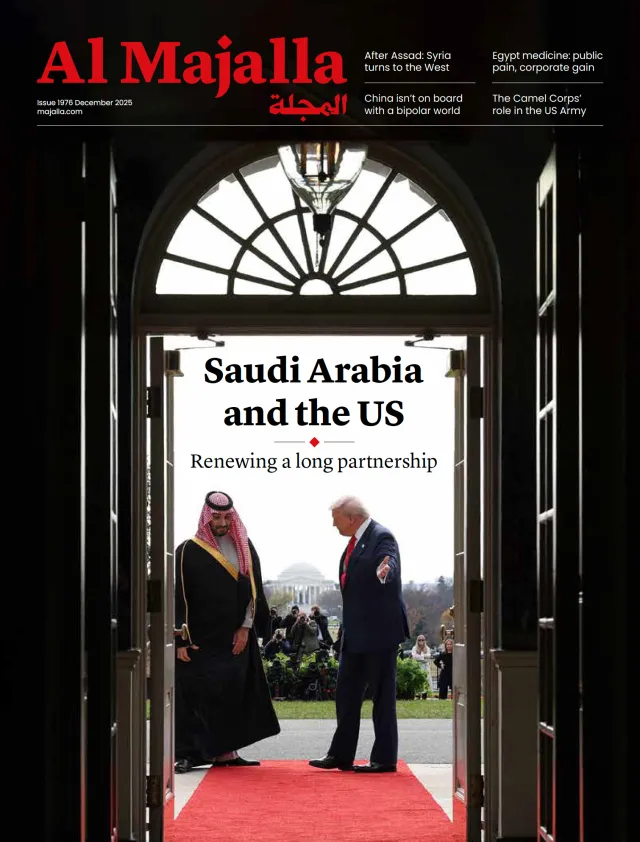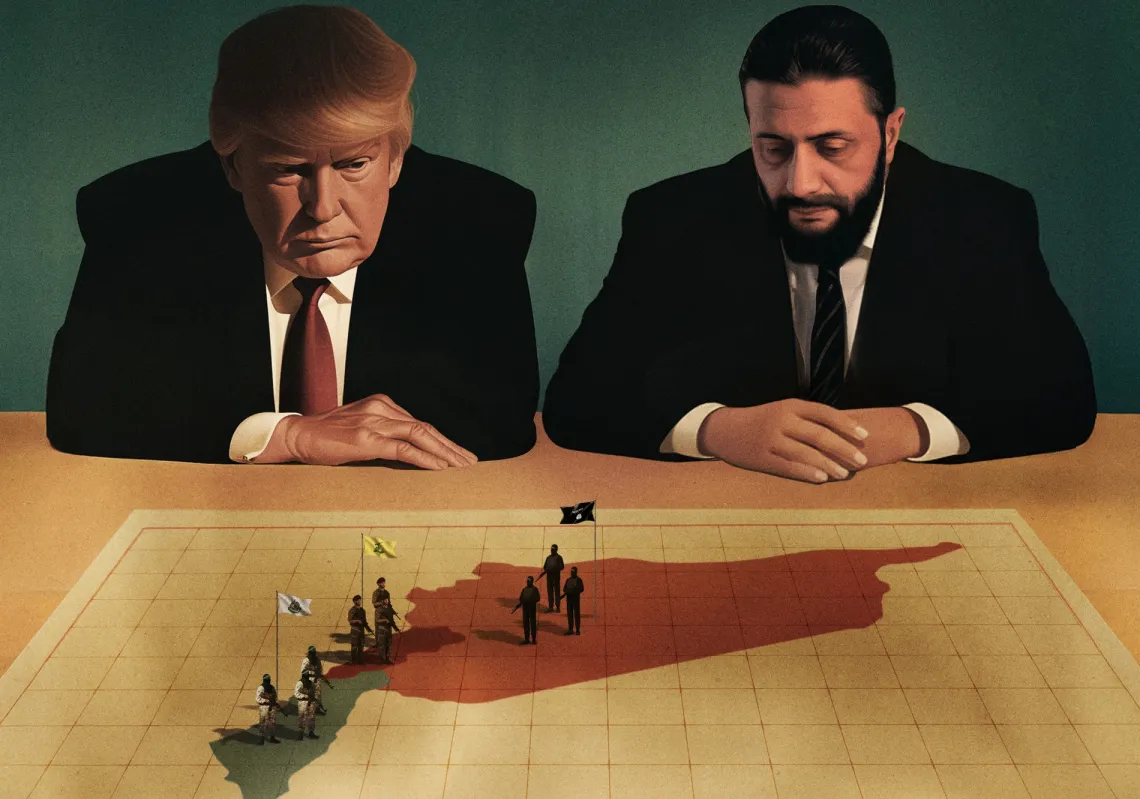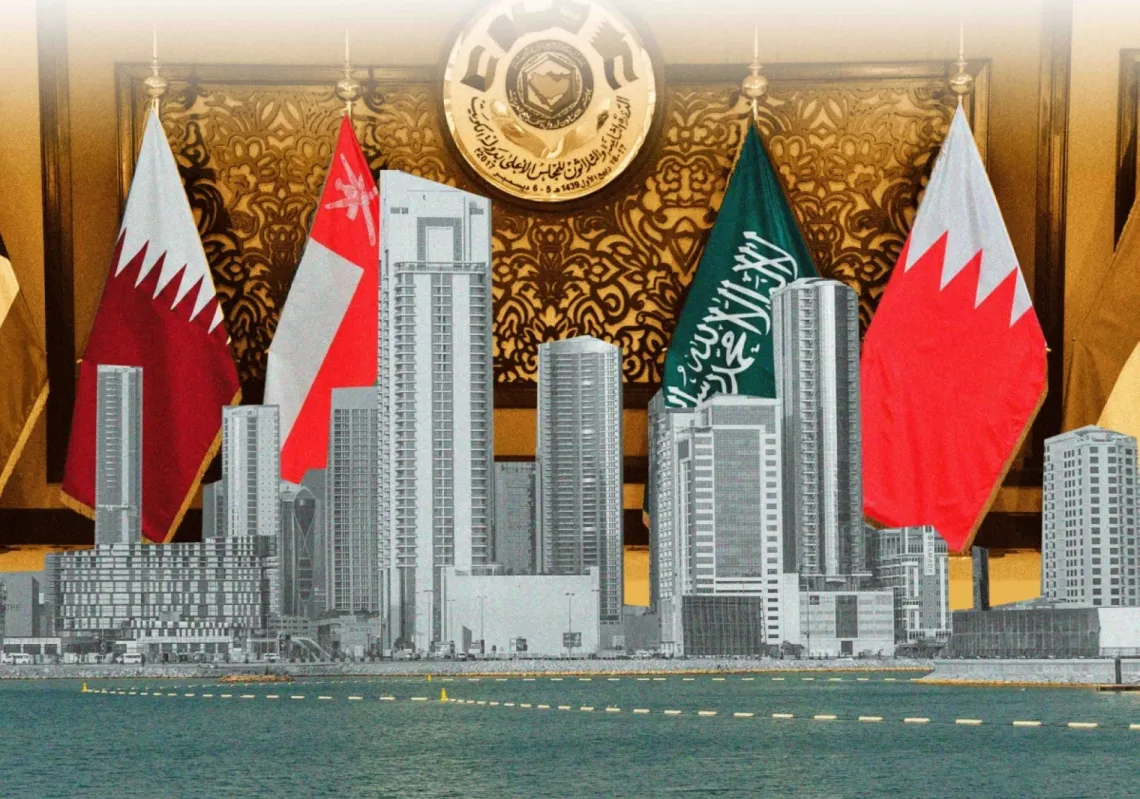The stars and stripes now fly over the reopened United States ambassador’s residence in Damascus, Syria. Lebanon’s new, technocratic president and prime minister have a historic opportunity, in curbing a weakened and decapitated Hezbollah, to restore the state’s monopoly on weapons for the first time since the end of the civil war nearly 35 years ago. Yemen’s Houthis have cut a deal with the US to cease their attacks on American ships in the Red Sea and Gulf of Aden. The Iran-backed network of proxy groups, which have for decades given Iran plausible deniability for its sectarian, destabilising agenda, has been decimated.
At the same time, President Trump spoke in Riyadh about the end of Western interference in the Middle East, and White House officials have waxed lyrical about the end of the post-Sykes-Picot era Western interference. Against this backdrop, the region breathes a painful sigh of relief following over 15 months of regional war, of which Gaza has borne the brunt of suffering. But this relative calm could quickly dissipate if Israeli Prime Minister Benjamin Netanyahu continues to incite against neighbouring countries and the interests of his most important ally, the US.
The US has never wavered in its unconditional support for Israel since Hamas launched its devastating attack on Israel on October 7, 2023, despite Israel’s devastating and ongoing war on Gaza that has enflamed regional tensions. During this time, Netanyahu has strived to box in US foreign policy options in the region.
However, to President Trump’s credit, the second Trump Administration has not been afraid to assert America's role as the senior partner in the US-Israel relationship, as opposed to former President Joe Biden, whom Netanyahu had effectively out-muscled. Biden’s stated policy after October 7 was to aid Israel’s military objectives, stave off a humanitarian crisis in Gaza, and prevent the conflict from expanding across the region. But the Biden-Netanyahu “bear hug” was a failure, and it would be an understatement to say that the October 7 conflict damaged US credibility globally.

Read more: The US is destroying the international system along with Gaza
Silver linings
The silver linings in Syria and Lebanon today—a collapsed Assad regime and a weakened Hezbollah, which emerged towards the end of the Biden Administration, though celebrated with caution and capitalised on by Biden and later Trump—were outcomes of Israel decisively altering the regional security environment, irrespective of preferences in Washington.
If Netanyahu had his way today, the US Navy would still be playing ‘whack-a-mole’ with the Houthis in Yemen, extending the deployment of yet another aircraft carrier or amphibious readiness group in the Middle East– scarce national assets that could instead be directed at our top priorities in the Indo-Pacific, rather than waging a costly, unending asymmetric campaign.
Netanyahu’s right-wing government would also be playing out Trump’s ‘Gaza Riviera’ video, which effectively endorses the ethnic cleansing of Palestinians from Gaza who have not yet been starved or bombed. Additionally, the US would not have taken the historic step of lifting sanctions on Syria and restoring US-Syria relations.
At play for Washington in the Middle East is the opportunity to keep Russia out of the Eastern Mediterranean, Iran’s proxy network at bay, and scale back China's ambitions in the Arab heartland. This will require regional stability, humanitarian recovery, economic development, and security cooperation between the US and regional allies.
None of these strategic objectives will be achieved by Netanyahu’s self-serving war for his own political survival, which doesn't hesitate to draw the US into another Middle East war to keep American policy tethered to his own. This crossroads in the Middle East requires Trump to continue using US leverage to prevent Netanyahu from igniting a war with Iran.

Meeting the moment
In Syria, US allies, from Türkiye to Saudi Arabia, have found harmony in the opportunity in this new strategic reality to play leading roles in stabilising the Levant. This opportune moment is only half complete, with the future of Gaza and the Palestinian people unclear.
But Arab leaders, with US and EU backing, have to meet the moment in the dismantling of the Iran threat network, which had effectively created a “land bridge” from Iraq to the Mediterranean, from Baghdad to Beirut, leveraging Iraqi Shiite political parties loyal to Tehran, and an Assad regime indebted to Iran’s intervention during the Syrian civil war, and its Lebanese Hezbollah proxy. But an Israeli strike on Iran, along with any further expansion of the post-October 7 regional war, would meet stark opposition from America's regional partners.
Arab states across the Arabian Gulf would directly feel the impact of these strikes, and their civilians would suffer the consequences of a volley of missiles, air, and unmanned strikes, as well as ecological and potentially radiological threats to the region’s water supply and environment.
The region is vital to global commerce, with the Strait of Hormuz being the most crucial maritime chokepoint for oil transport. US allies and adversaries in Asia, from India and Japan to China—who rely on most of the oil and gas passing through the Arabian Gulf—would have much to say if the US allows for a broader conflict to erupt.
















